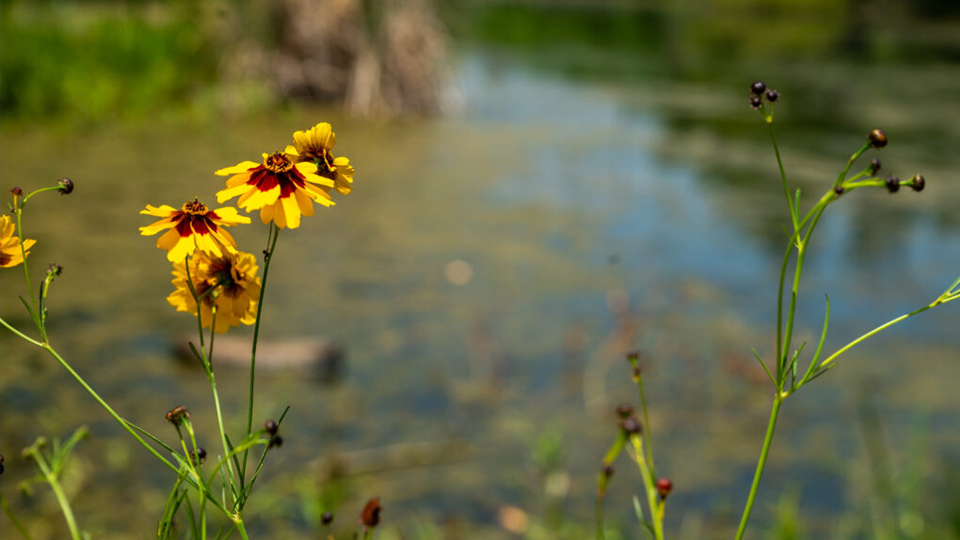More than 260 acres of Indiana wetlands lost due to 2021 law
Subscriber Benefit
As a subscriber you can listen to articles at work, in the car, or while you work out. Subscribe Now
Indiana has lost more than 260 acres of wetlands in the two years since a new state law made Hoosier lands more vulnerable to flooding and environmental damage, according to a group of environmental organizations.
The 2021 state law, Senate Enrolled Act 389, removed all state protections for Class I wetlands, which make up more than half of the state’s remaining wetlands. Although considered to be less pristine, those wetlands still help reduce flooding and improve water quality.
The policy also reduced the permit requirements for disturbing or filling other wetlands in Indiana.
Now, more than a dozen Hoosier environmental groups are pointing to Indiana Department of Environmental Management (IDEM) data, which shows that 261 acres of Indiana wetlands have been destroyed since Summer 2021.
In that time, IDEM issued permits — or determined a permit was not needed — to build on nearly 350 acres of wetlands in the state. Only 85 of those acres — about a quarter — required mitigation, meaning building would have to take place elsewhere.
Indiana is home to more than 800,000 acres of wetlands, equal to about 3.5% of the state’s geography.
Environmental advocates emphasized in a new report that the lost wetlands could store up to about 390 million gallons of water. Without them, those areas are now more susceptible to flooding.

“Only about 10% of Indiana’s original wetlands remain, and these data show accelerated wetland loss,” said Indra Frank, the director of environmental health and water policy at the Hoosier Environmental Council (HEC), one of 13 conservation groups that compiled the report.
“Since the Indiana law is performing poorly and so many more wetlands are now falling under that law, we are concerned that the state will suffer from accelerated wetland losses going forward,” she continued. “Wetland loss means loss of water storage and loss of groundwater recharge.”
Although IDEM’s data doesn’t make clear where each wetland loss occurred, Franks said the greatest and fastest loss appears to be located in central Indiana, within the upper White River watershed.
More damage on the way?
A U.S. Supreme Court ruling from earlier this year will also effectively remove federal protections for most of Indiana’s wetlands — and enable Hoosier lawmakers to repeal already-weakened state protections for those areas.
The high court justices said wetlands protected by the U.S. Environmental Protection Agency (EPA) must only be those adjacent to a “relatively permanent” waterway “connected to traditional bodies of water.”
Although 80% of Indiana’s wetlands had federal protection, that is expected to drop to 20% following the Supreme Court ruling.
Frank and other advocates warn that without state protections, Indiana is likely to lose even more wetlands.
“We need to stop thinking about wetlands as nuisance land, as those with development aims do. Wetlands provide more critical functions to our shared existence than nearly any other type of land cover,” said Jill Hoffmann, executive director of the White River Alliance, in a statement. “They are key to managing our regional water supplies, including recharging ground water, the demand for which is ever increasing.”
Continued efforts to protect wetlands
The 14 environmental groups have long maintained that wetlands are vital for soaking up excess nutrients in soil — especially elements like nitrogen and phosphorus, which are common ingredients in fertilizer that can leach from farmland — and preventing them from creating problems elsewhere.
Wetlands also catch and hold excess stormwater, reducing flooding on that landscape. Additionally, they help cleanse underground aquifers. That’s important, given that about 70% of Indiana residents rely on groundwater for at least part of their drinking water supply, according to IDEM.
The groups that issued the wetlands report include the Conservation Law Center, Conserve Indiana, Earth Charter Indiana, Hoosier Chapter of the Sierra Club, Hoosier Environmental Council, Indiana Conservation Voters, Indiana Forest Alliance, Indiana Land Protection Alliance, Indiana Wetlands Association, Indiana Wildlife Federation, League of Women Voters of Indiana, The Nature Conservancy of Indiana, Save the Dunes, and White River Alliance.
The Indiana Department of Natural Resources notes, too, that wetlands provide a habitat for half of Indiana species with small or declining populations.
But in recent years, builders and developers have pressed elected officials to decrease wetlands regulations, which they say limit their construction abilities.
During the 2023 legislative session, multiple Republican lawmakers who also serve as members of the Indiana Builders Association (IBA) attempted to pass a last-minute amendment that sought to reduce the number of state-protected wetlands even further.
The provision sought to make it harder for a wetland to be considered anything but Class 1 and would eliminate the possibility of any Class 1 or Class 2 wetlands being elevated to the most-protected Class 3 status.
Republican lawmakers claimed the change would “clarify” definitions in the state’s wetlands statute.
Even so, the amendment ran counter to findings from the Indiana Wetlands Task Force — convened by the legislature — which recommended Indiana to have a separate state law to regulate wetlands that isn’t bound to federal rules.
The language failed to become law, however.
It’s not clear what additional changes lawmakers plan to make to state wetlands laws in the 2024 legislative session.
During the 2023 Indiana Water Summit, though, environmental advocates urged Indiana policymakers to focus more on preserving wetlands and existing drainage channels, noting that well-managed wetlands can replace “expensive” expenditures for local municipalities later on.
The Indiana Capital Chronicle is an independent, not-for-profit news organization that covers state government, policy and elections.
